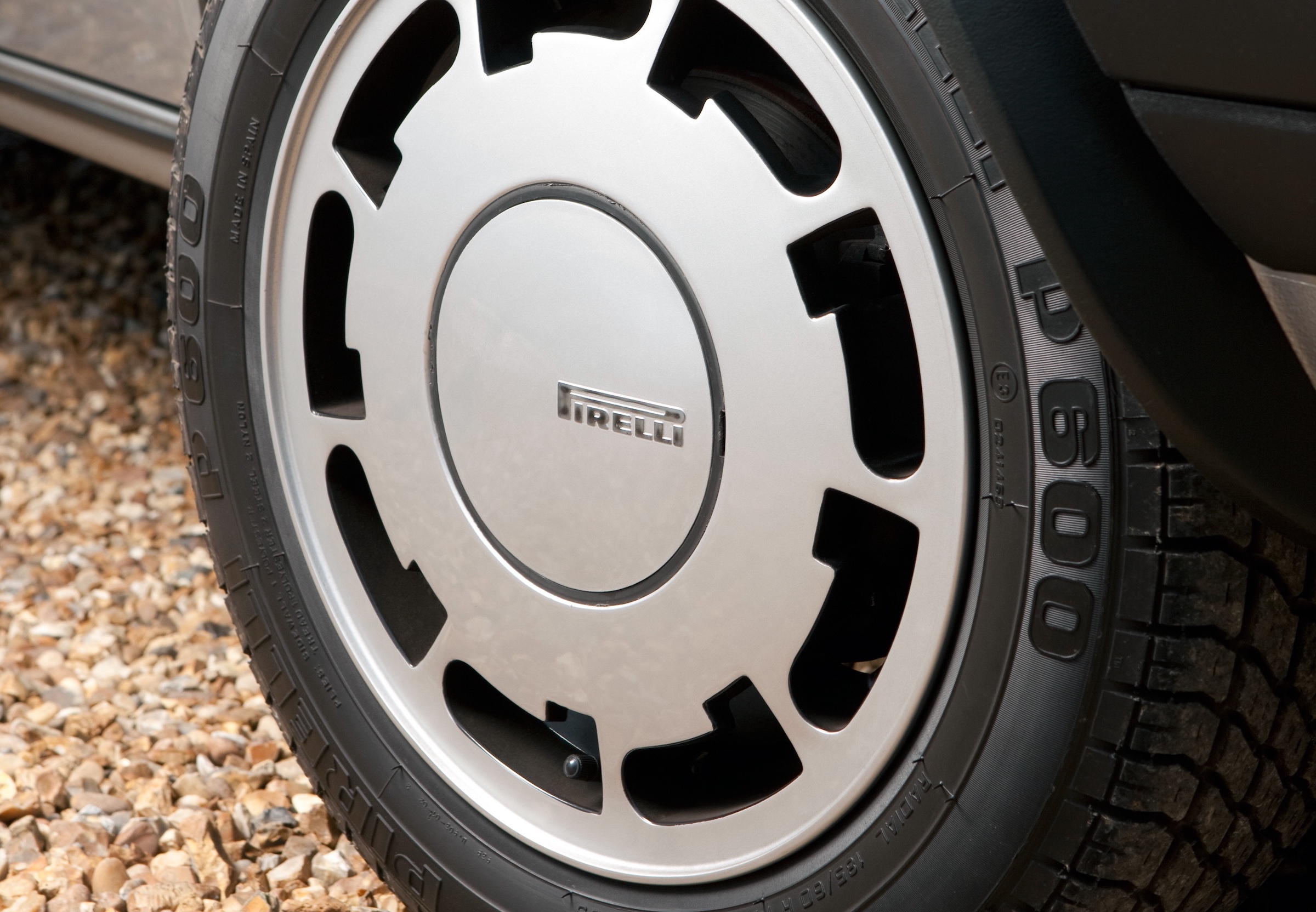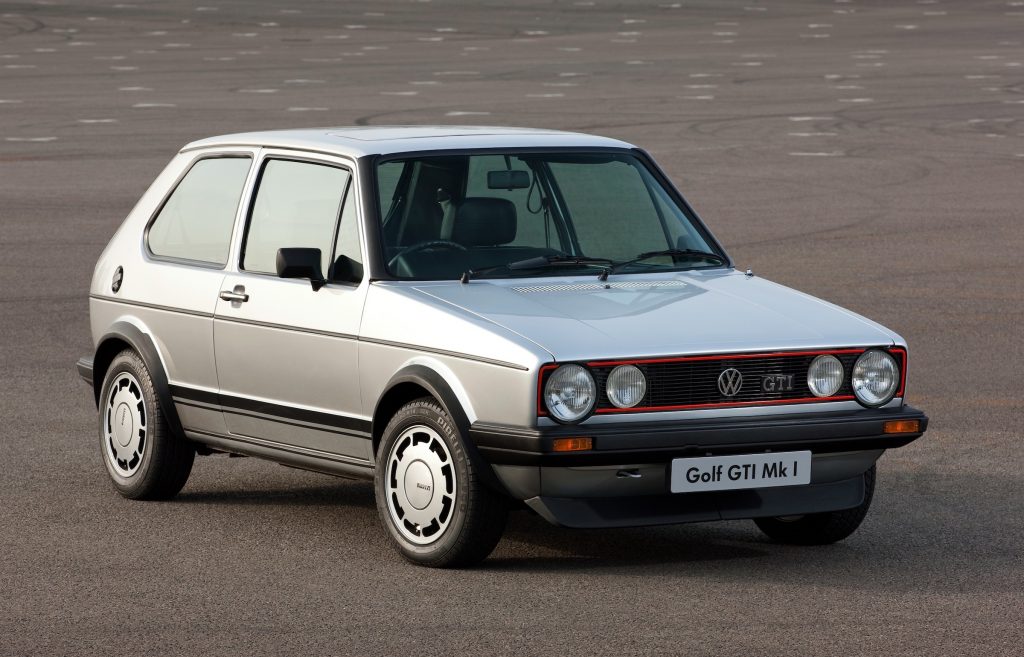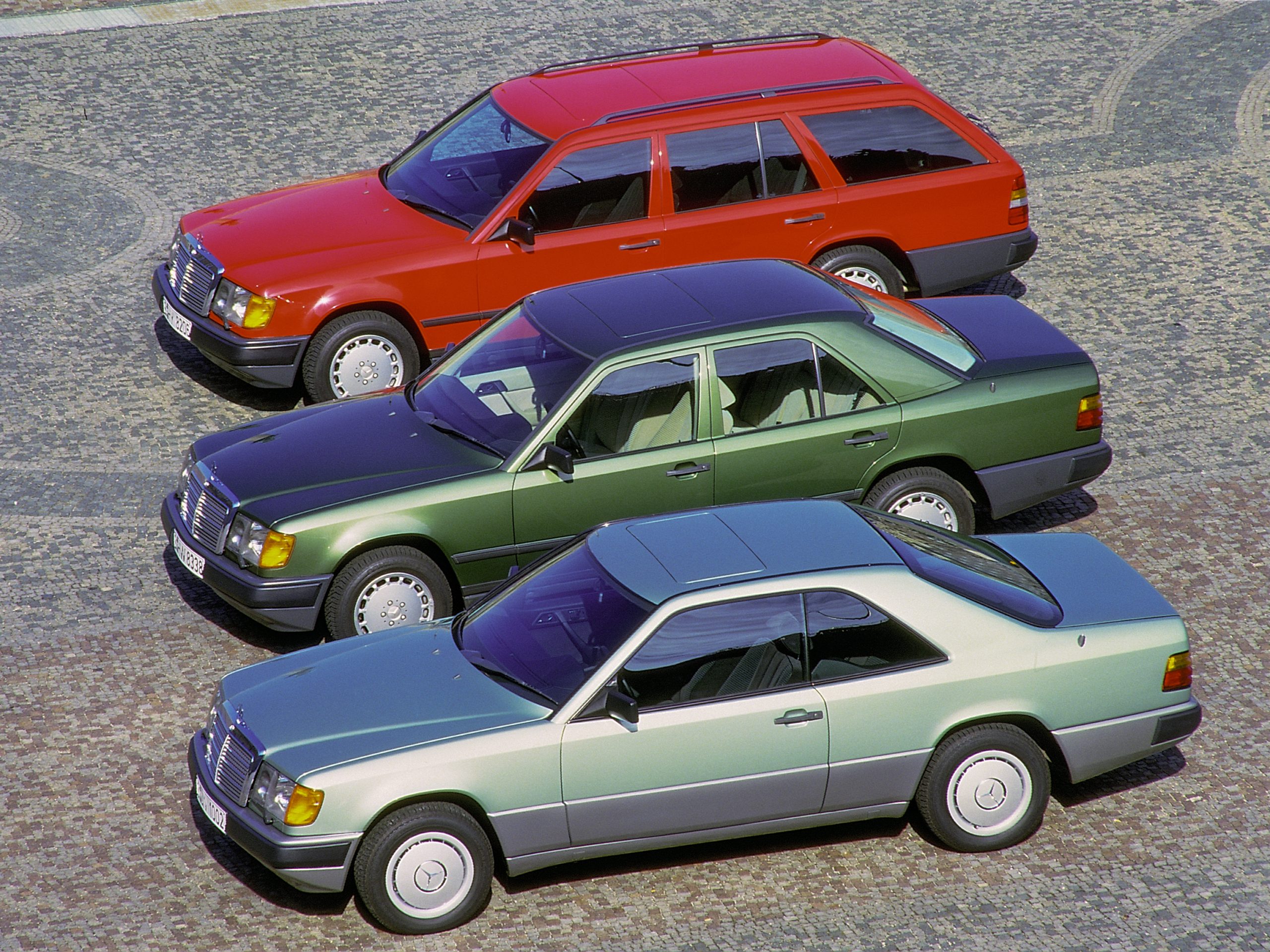Want to start an argument? Just state a particular car started the whole hot hatch scene and stand back as the discussion rages.
One of the biggest factions will side with the Volkswagen Golf GTI Mk1, and they have a fair claim. While there certainly were fast hatches before the 1975 debut of the GTI, it was the Golf that truly popularised the breed and spurred rival companies to create their own souped-up versions of mainstream hatches.

While it’s been told many times before, it’s worth revisiting the story of the Golf GTI’s creation, which lies in a few enthusiastic employees spotting the potential of marrying the three-door Golf body with the newly introduced 1588cc fuel-injected petrol engine from the Audi 80 GTE. It was more formal than the completely off-the-books project some believe it was, with engineer Alfons Lowenberg pushing ahead with development before official approval had been given.
The result was a car producing 110bhp at 6100rpm, and the revvy motor delivered some 57 per cent more power than the Golf’s existing 1.5-litre petrol engine. In a car weighing just 780kg dry, it meant 0-60mph in nine seconds – none too shabby for the time – and a top speed of 113mph.

When Volkswagen found itself without much to show at the 1975 Frankfort motorshow, the GTI project was put in the limelight. Sales predictions were 5000 in total, which was a mere couple of days of Golf production overall, and this number handily qualified the car for Group 1 Production Cars in the European Touring Car Championship.
Little did VW realise the public clamour that would develop for the GTI, even if some initial press reports from the Frankfurt show reckoned the car had too much power to cope with. However, as soon as road testers got their hands on the GTI, the truth was out that here was a sporty car with all the practicality of a hatchback.
Where performance car fans had previously had a choice between coupés or open-tops such as the MGB, the Golf GTI gave them a thoroughly modern, dependable and exciting alternative. All this and it had new-fangled fuel injection as standard. Other GTI-specific changes were a 20mm lowered ride height and firmer suspension, a 14mm wider track with broader wheels and tyres, and ventilated front disc brakes.
Red trim around the grille, black stripes along the door bottoms, and a jutting front plastic spoiler completed the original outside look. On the inside, there was the steering wheel from the Scirocco TS, Recaro bucket seats with tartan cloth upholstery, and the now famous golf-ball gear knob. As a nod to its sporting credentials, the GTI driver also enjoyed an oil pressure gauge and rev counter.



Demand quickly outstripped the original build allocation and VW increased production from 50 GTIs per day to 500. In the UK, buyers had to wait until 1977 for the first left-hand drive GTIs to arrive, and even then only 22 were sold through VW dealers. The following year, 1500 were snapped up in the UK and right-hand production began in 1979.
Shortly after its launch, VW swapped the four-speed manual gearbox for a five-speed unit. The next big change was replacing the 1.6-litre engine with a more powerful 1.8-litre in 1982. It remained until the end of GTI hatch production, with the final 1000 or so cars sold as Campaign models with luxuries such as a sunroof, twin headlights, and Pirelli alloy wheels as standard.
Even when the Mk1 Golf hatch ended production and VW launched the Mk2 GTI, the Mk1 GTI carried on in the shape of the Golf Cabriolet. It had arrived in 1979 as the Golf GLi with the 1.6-litre engine, gaining the 1.8-litre motor in 1982 and then becoming the GTI in 1985. It stayed in the VW line-up all the way to 1993 when it was eventually replaced by the Mk3 convertible.
What’s a Mk1 GTI like to drive?

There’s a good reason the Volkswagen Golf GTI became the benchmark for all hot hatches throughout the 1970s and 1980s – it’s pretty much faultless. This doesn’t mean it’s always the quickest or sharpest handling, but it is perpetually there in the race for top honours in every aspect of what makes a hot hatch fun to drive.
In the earlier 1.6-litre cars, which have the same 110bhp as the 1.8 but less torque – at 103lb ft versus 110lb ft for the larger capacity motor – you’ll find the engine needs to be revved to get the best from it. This is far from a criticism and simply underlines the eager nature of these cars. Work it hard and there’s also a noticeable step up in urge from around 4000rpm that encourages you use the gearbox to keep the revs high.
The engine is not one of the most exotic-sounding when it is pushed further up the rev band, but it has an honest and sporty four-cylinder note. If you find one of the rare early four-speed GTIs, it will be just as much fun to use as the five-speed model that quickly replaced it after launch. The gearbox should be snappy and fluid in its action, while the only slight demerit are the brakes that need a good shove on the pedal to really slow the car. This is something that particular afflicts right-hand drive GTIs, though many cars have since had uprated pads, discs, lines and fluid to improve matters.

The later 1.8-litre engine changes the character of the GTI, as its not quite as keen to rev so freely. However, its greater torque at lower revs masks this trait and the later engine lets the GTI cover the 0-60mph dash in 8.2 seconds to the 1.6’s 9.0 seconds, with top speed the same for both at 113mph. Either way, fuel injection made it as dependable as it was enjoyable, and it remains a hassle-free classic for regular use today.
When you do, you’ll find it more than able to deal with modern roads and traffic. The ride is supple by modern calibrations, while the handling is perfectly in tune with the amount of grip on offer. Most bog-standard modern superminis will offer more ultimate cornering grip, but the GTI lets the driver feel what’s going on and have much more of a say on approach, attitude and exit of any bend.
Direct, unassisted steering is key to this, while the GTI’s light weight also contributes in a way later, heavier Golf GTIs miss out on. This is why the Mk1 GTI has such a huge following, yet it is also still a very able four-seat hatch with decent boot, refinement and even reasonable 30mpg average fuel economy.
How much does a Mk1 GTI cost?


For purists seeking the source of the GTI legend, nothing less than the earliest MK1 with four-speed manual gearbox will do. They are exceedingly rare and if you can find one, as you can see in the Hagerty price Guide a car in excellent condition will be upwards of £20,000, with the best in the world nearly touching £30,000. Five-speed models may be a little less but remember, GTIs built prior to 1979 will be left-hand drive.
Don’t expect to spend much less even on a 1979-on right-hand drive 1.6-litre GTI as they are also rare due to poor rust protection when new thinning out numbers. From £20,000 will get you a car in superb order, while £13,500 is on the money for a well sorted and usable car that needs only a little work to make it better.
There are a good number of Mk1 1.8s available, but their desirability as part of the Golf GTI legend means you’ll pay similar prices to the 1.6-litre car. The exception here is the convertible GLi and then later GTI models, which can be had in very good order for around £12,000. Around half that sum will get you a running and driving GTI Cabriolet, but expect it to need work to the body, mechanics, hood and interior.
What goes wrong and what should you look for?

It will come as no shock to discover the first thing to look for on any Volkswagen Golf GTI Mk1 is our old friend rust. Cars built up to 1980 have been more susceptible due to less effective corrosion-proofing from the factory when new, but the age of even the youngest Mk1 GTI means any car can be afflicted.
Post-1980 cars were better protected from new with wheel arch liners and better paint standards, but they were not galvanised. This means you need to look for rot in the inner wings. Find rust here and it’s best to walk away and look for another car.
The A-pillars are another spot known for corrosion at the lower edges where they meet the windscreen. You also need to look all around the windscreen, and sunroof opening if it has one. All of the usual checks are needed along the sills and wheel arches, as well as the front valance seams. Doors can rust along their bottom edges and it pays to look carefully around the fuel filler cap. Inside you must inspect the spare wheel well and floorpans.

The two engine options are both remarkably long-lived and reliable, but check for any smoke or noises that indicate worn piston rings. The valve stem oil seals harden and cause a puff of smoke on start-up, while under acceleration worn valve guides will also generate a cloud of smoke, so watch in the rear-view mirror for this. Gearboxes are tough, so just be sure they slot into second gear without a crunch.
Many cars will have had aftermarket alarms and stereos fitted over the years, so look for signs of bodging in the wiring system. The fuse box is buried underneath the dashboard, meaning more serious faults can be time consuming to diagnose and cure. Don’t be alarmed if the windscreen wipers operate slowly as they did this from new. Lastly, inspect the state of the upholstery as many of the fabrics are difficult to find replacement material for, so a car with a complete and intact interior is a good starting point for a restoration.
If you specifically want a Campaign model from late in the Mk1 GTI’s life, check it has the correct sunroof, tinted glass, leather steering wheel, twin headlights, and inner door lock buttons. The correct wheels, too: the Pirelli ‘P-slot’ alloy wheels should have a 7mm gap between the outer slots, compared to a 10mm gap used on the same design of wheel for the Mk2 GTI.
Which is the right Mk1 GTI for you?

A four-speed Golf GTI Mk1 is so rare you’re unlikely to find one, and if you do ever-increasing prices mean it’s becoming a car for serious collectors.
It’s now much better to aim for a five-speed version and buy the best condition car you can. For UK buyers wanting right-hand drive, that means a 1979-on car, while from 1982 the engine was swapped to the 1.8-litre motor. The change in engine alters the character of the Mk1 GTI from being a real buzz box to something a touch more laid back but also fractionally quicker off the mark. Few will notice the difference and simply revel in the fine handling and involving drive this hot hatch serves up.
Another option is the GTI in Mk1 Cabriolet form. It’s not as sharp to drive as the hatch, but still far more rigid than most of its contemporary drop-top rivals. The Cabrio is also more affordable to buy, though it needs careful checking for rot and the condition of the roof before you open your wallet.
Read more
The Handbook of Sloane Ranger Cars: Volkswagen Golf GTI Mk1
Quite a number: Peugeot 205 GTI 1.9 breaks the £40,000 barrier
The Mk3 Volkswagen Golf GTI is not as bad as we’re told









